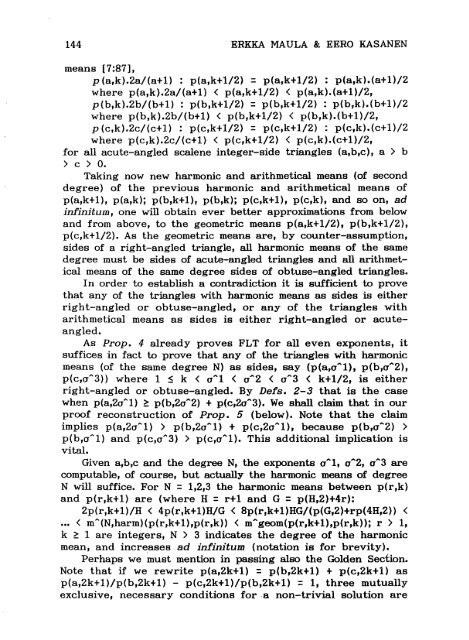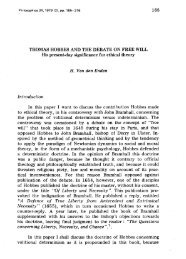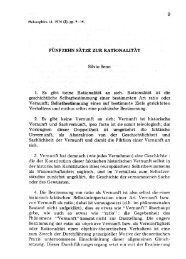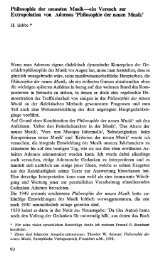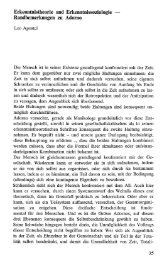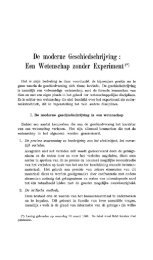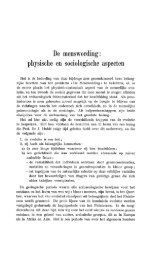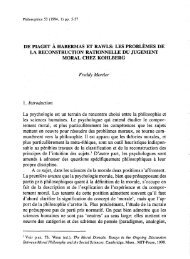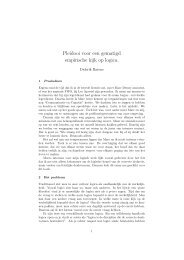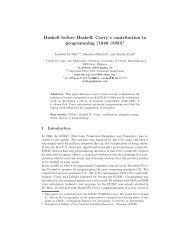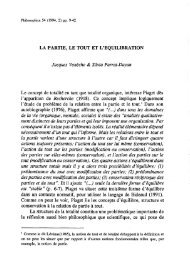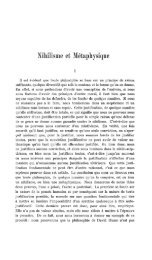CHEZ FERMAT A.D. 1637' Erkka Maula and Eero Kasanen Abstract ...
CHEZ FERMAT A.D. 1637' Erkka Maula and Eero Kasanen Abstract ...
CHEZ FERMAT A.D. 1637' Erkka Maula and Eero Kasanen Abstract ...
You also want an ePaper? Increase the reach of your titles
YUMPU automatically turns print PDFs into web optimized ePapers that Google loves.
144 ERKKA MAULA & EERO KASANEN<br />
means [7:87],<br />
p (a,k).2a/(a+1) : p(a,k+1/2) = p(a,k+l/2) : p(a,k).(a+1)/2<br />
where p(a,k).2a/(a+1) < p(a,k+1/2) < p(a,k).(a+l)/2,<br />
p(b,k).2b/(b+l) : p(b,k+l/2) = p(b,k+l/2) : p(b,k).(b+l)/2<br />
where p(b,k).2b/(b+l) < p(b,k+1/2) < p(b,k).(b+l)/2,<br />
p (e,k).2e/(e+l) : p(e,k+l/2) = p(c,k+1/2) : p(c,k).(c+1)/2<br />
where p(c,k).2e/(c+l) < p(c,k+1/2) < p(c,k).(c+l)/2,<br />
for aIl aeute-angled scalene integer-side triangles (a,b,e), a > b<br />
> c > o.<br />
Taking now new harmonie <strong>and</strong> arithmetical means (of second<br />
degree) of the previous harmonie <strong>and</strong> arithmetical means of<br />
p(a,k+l), p(a,k); p(b,k+1), p(b,k); p(c,k+l), p(c,k), <strong>and</strong> sa on, ad<br />
infinitum, one will ob tain ever better approximations from below<br />
<strong>and</strong> from above, ta the geometric means p(a,k+l/2), p(b,k+l/2),<br />
p(c,k+1/2). As the geometrie means are, by counter-assumption,<br />
sides of a right-angled triangle, aU harmonie means of the same<br />
degree must be sides of acute-angled triangles <strong>and</strong> an arithmetical<br />
means of the same degree sides of obtuse-angled triangles.<br />
In arder ta establish a contradiction it is sufficient ta prove<br />
that any of the triangles with harmonic means as aides is either<br />
right-angled or obtuse-angled, or any of the triangles with<br />
arithmetical means as sides is either right-angled or aeuteangled.<br />
As Prop. 4 already proves FLT for a11 even exponents, it<br />
suffices in facl to prove that any of the triangles with harmonic<br />
means (of the same degree N) as sides, say (p(a,o"'î), p(b,0"'2),<br />
p(c,0"'3» where 1 ~ k < o"'î < oA2 < 0"'3 < k+l/2, is either<br />
right-angled or obtuse-angled. By Defs. 2-3 that is the case<br />
when p(a,20"'1) ~ p(b,20"'2) + p(c,20"'3). We shall claim that in our<br />
praof reconstruction of Prop. 5 (below). Note that the claim<br />
implies p(a,20"'1) > p(b,20Al) + p(c,20"'1), because p(b,u""2) ><br />
p(b,o"'l) <strong>and</strong> p(c,0"'3) > p(c,o"'l). This additional implication is<br />
vital.<br />
Given a,b,c <strong>and</strong> the degree N, the exponents u .... î, u ..... 2, 0 ..... 3 are<br />
computable, of course, but actually the harmonic means of degree<br />
N will suffice. For N = 1,2,3 the harmonic means between p(r,k)<br />
<strong>and</strong> p(r,k+1) are (where H = r+1 <strong>and</strong> G = p(H,2)+4r):<br />
2p(r,k+1)/H < 4p(r,k+l)H/G < 8p(r,k+l)HG/(p(G,2)+rp(4H,2» <<br />
••• < m"'(N,harm)(p(r,k+l),p(r,k» < m .... geom(p(r,k+l),p(r,k»; r > 1,<br />
1 are integers, N > 3 indicates the degree of the harmonic<br />
k ~<br />
mean, <strong>and</strong> increases ad infinitum (notation is for brevity).<br />
Perhaps we must mention in passing rusa the Golden Section.<br />
Note that if we rewrite p(a,2k+1) = p(b,2k+1) + p(c,2k+1) as<br />
p(a,2k+1)/p(b,2k+1) - p(c,2k+1)/p(b,2k+l) = 1, three mutually<br />
exclusive, necessary conditions for.a non-trivial solution are


